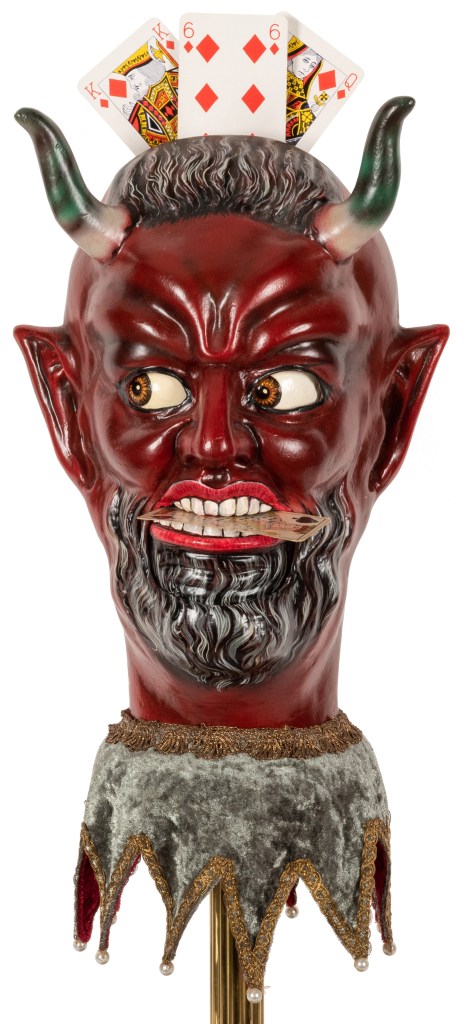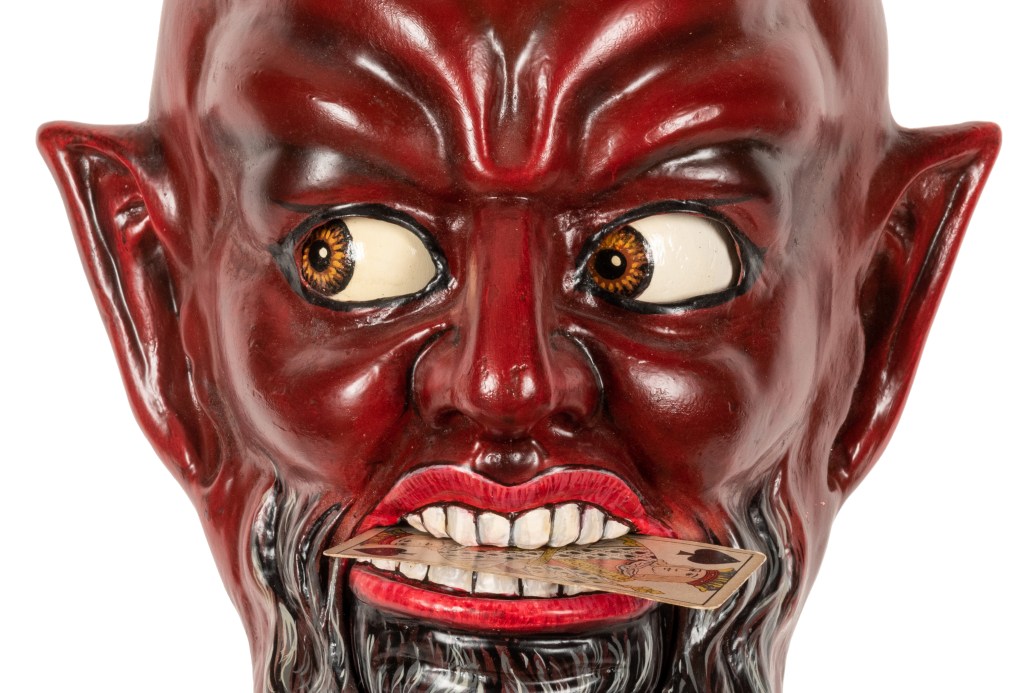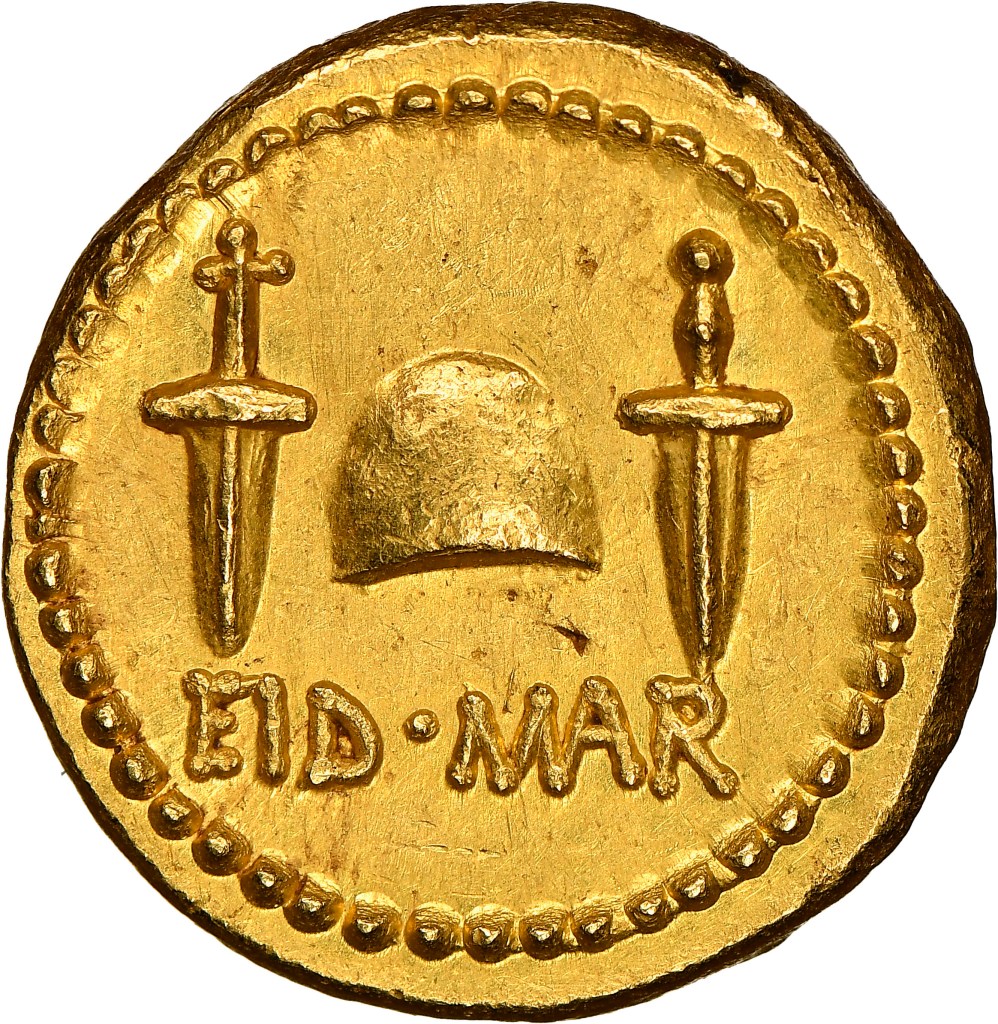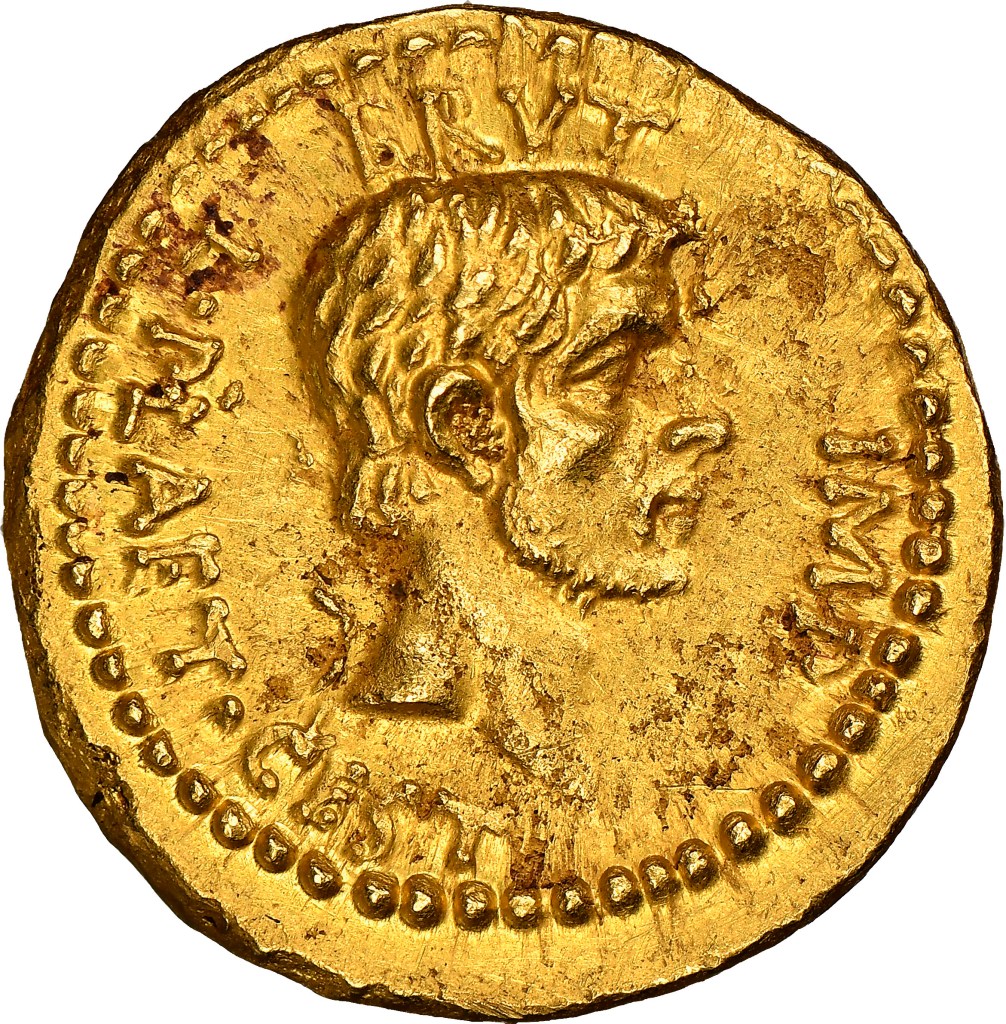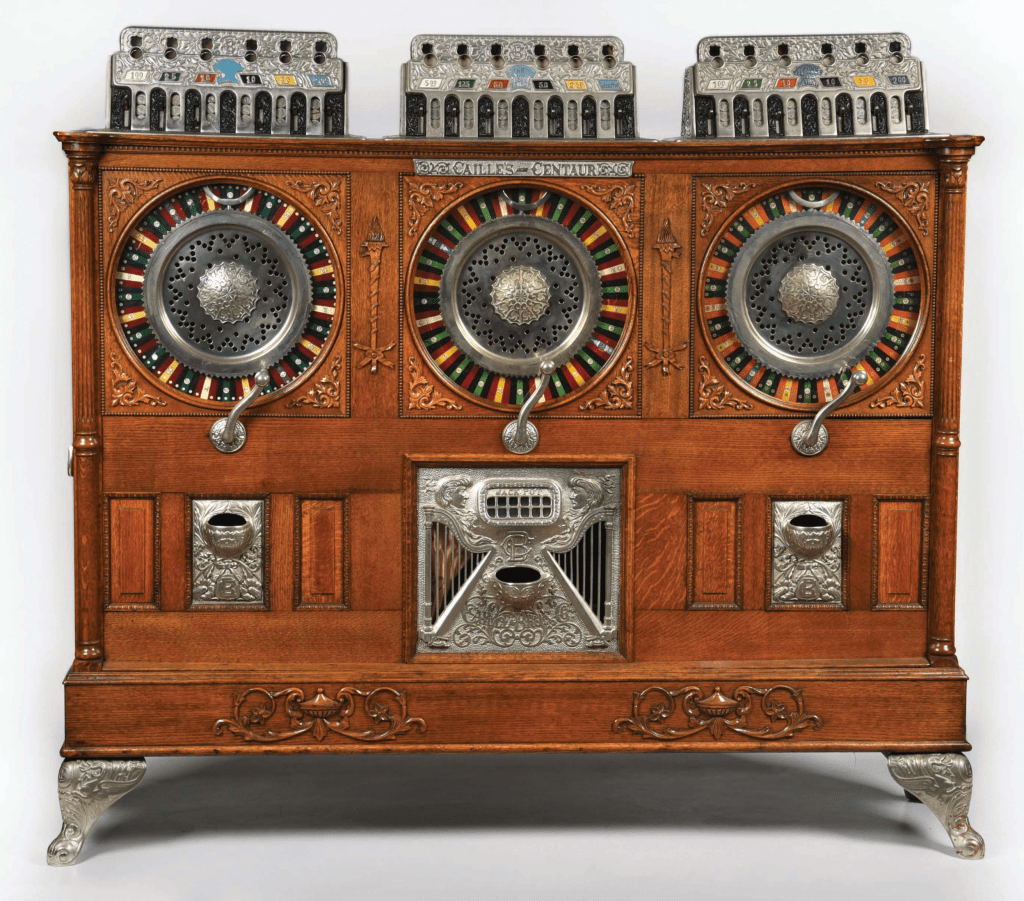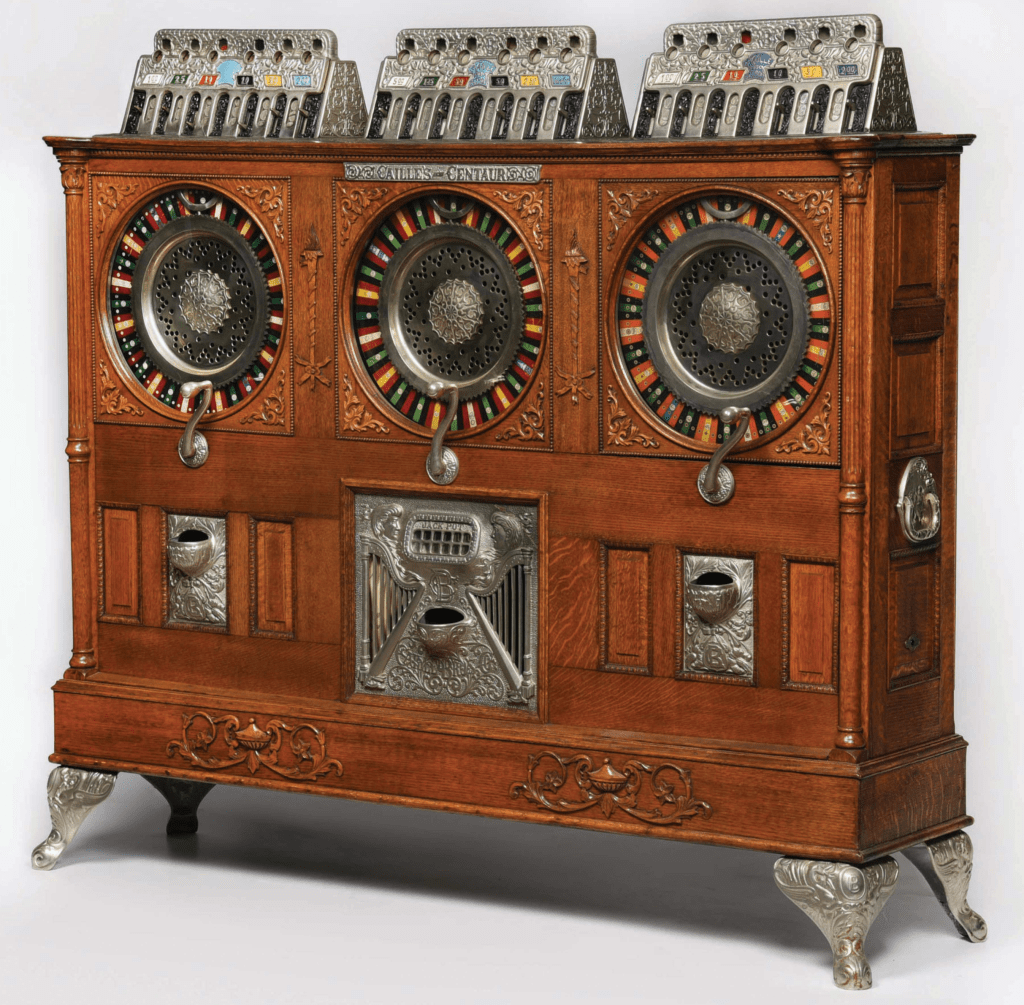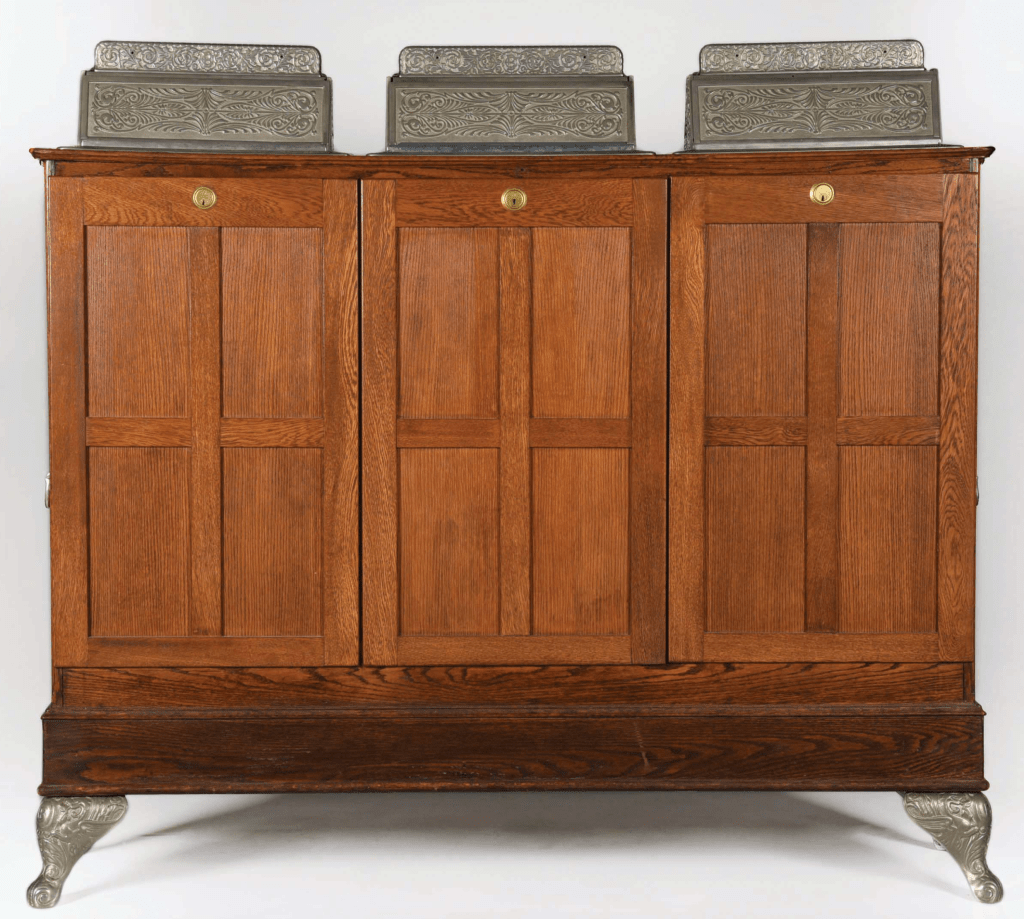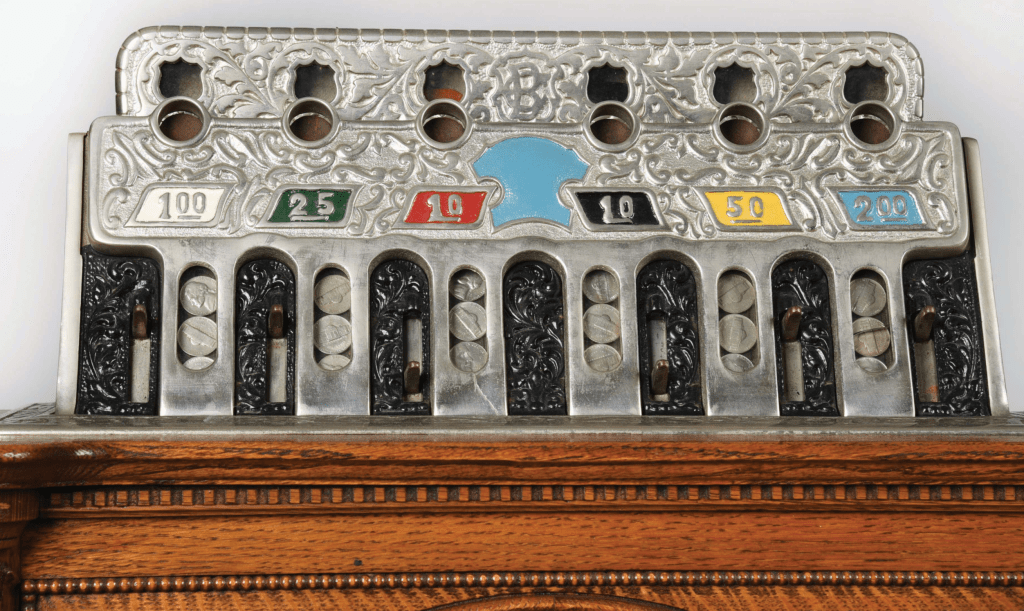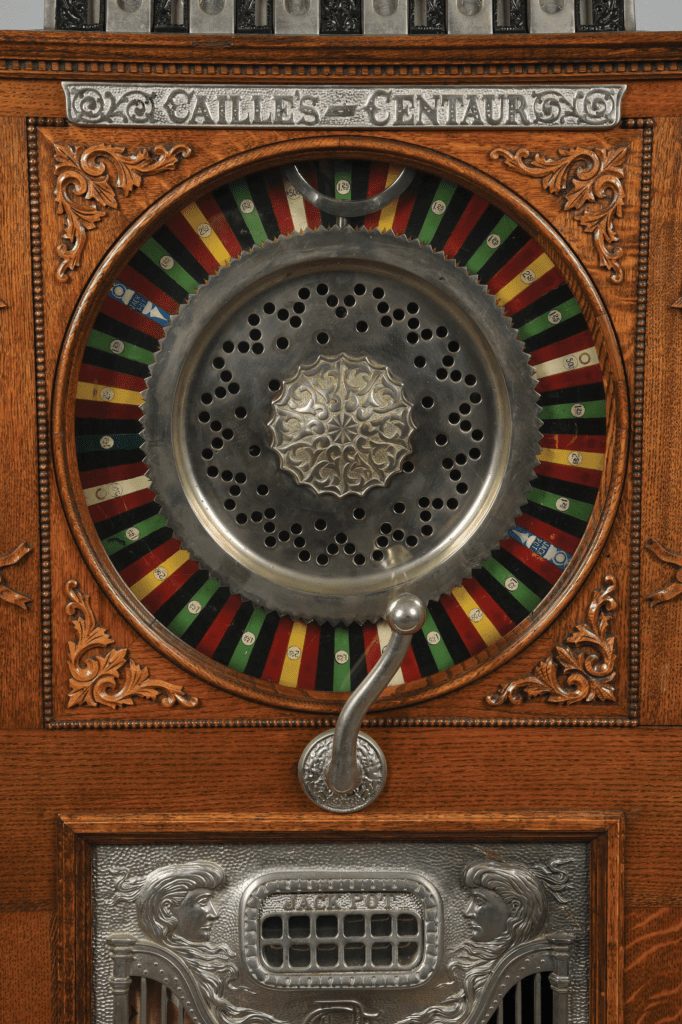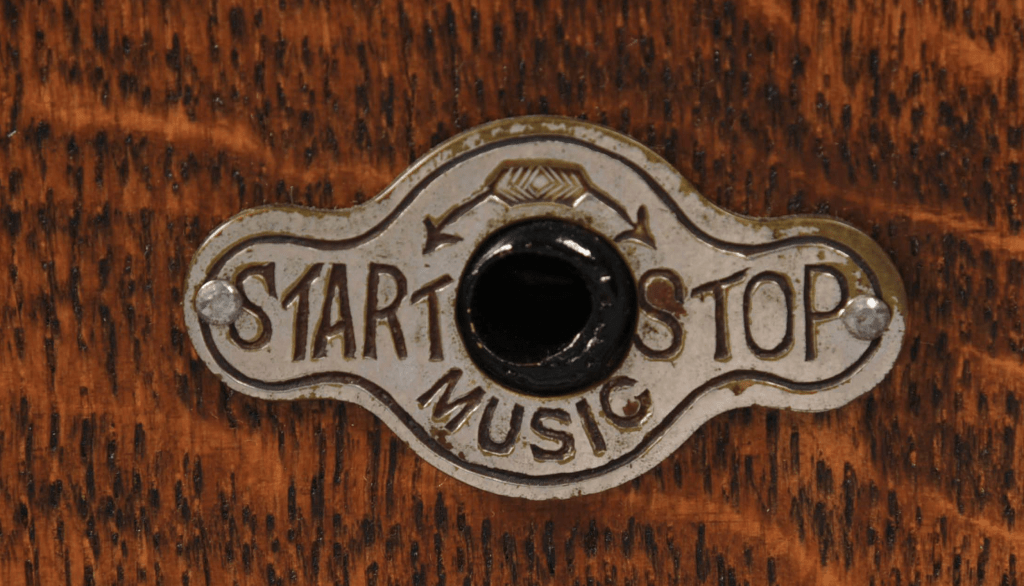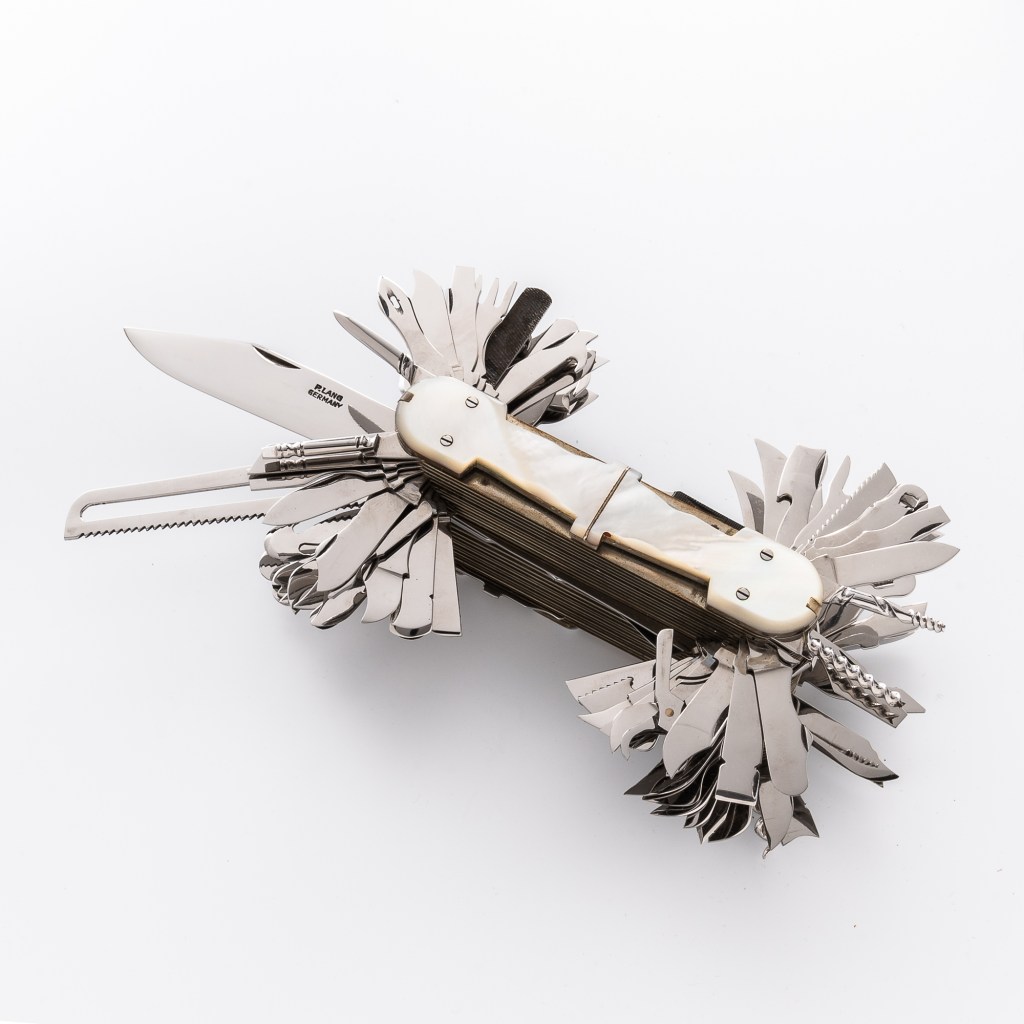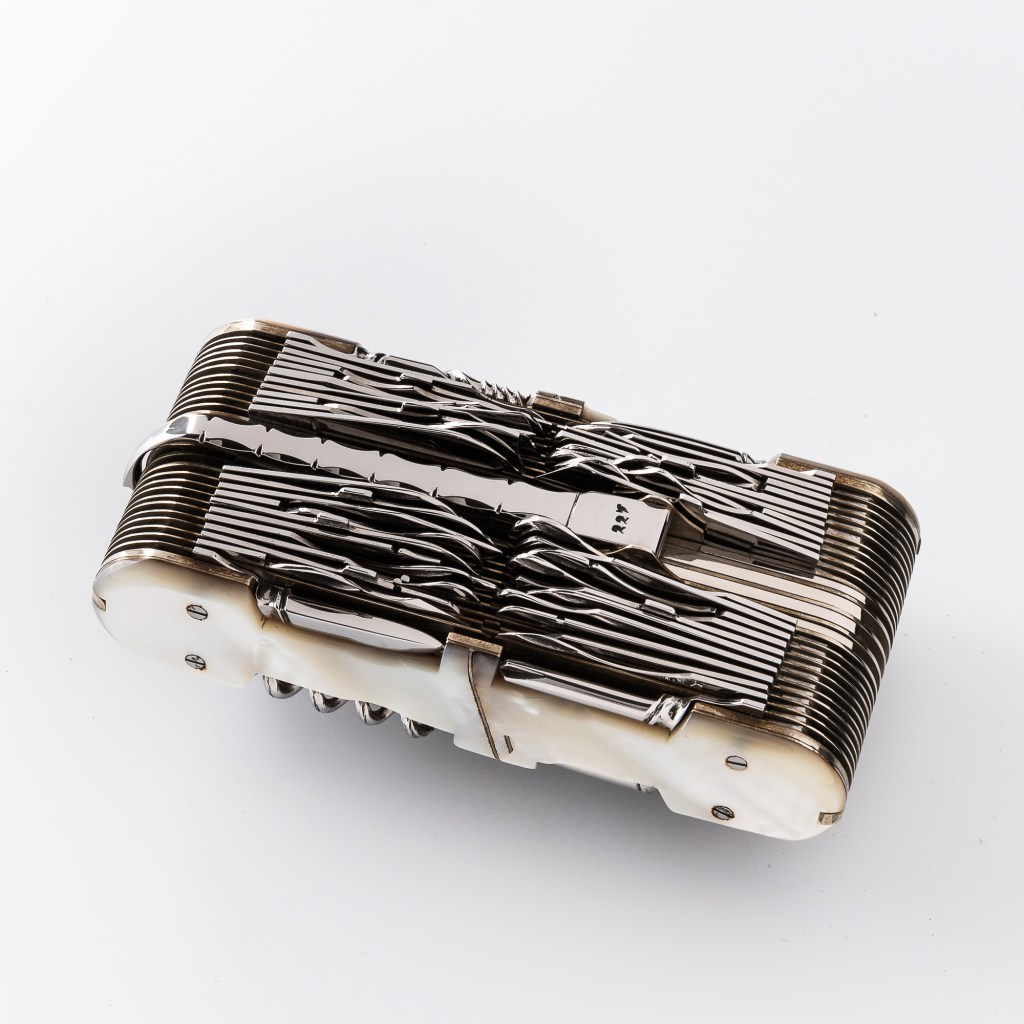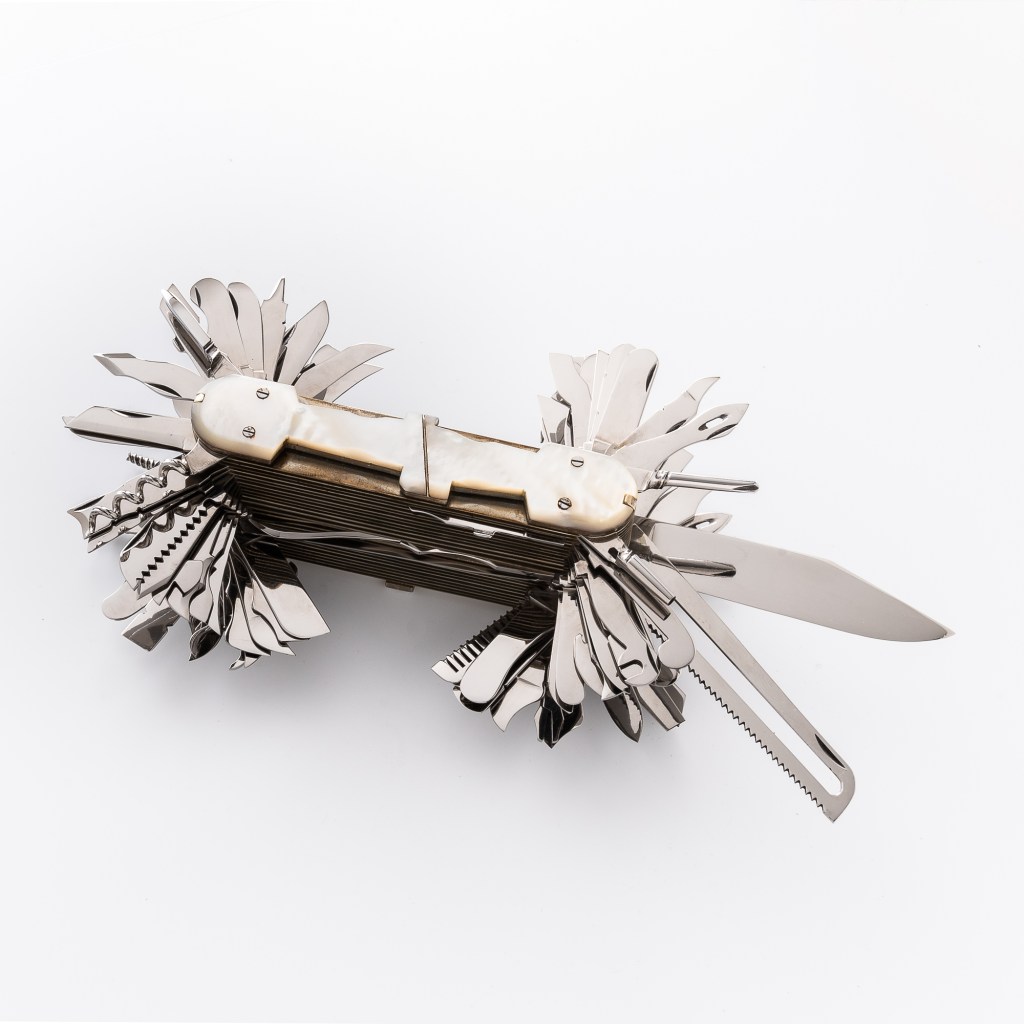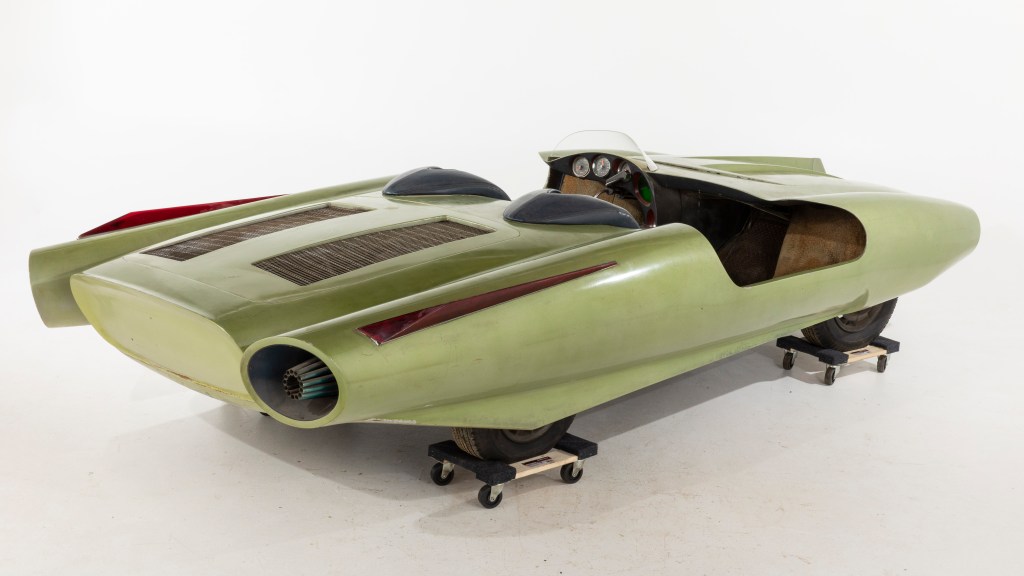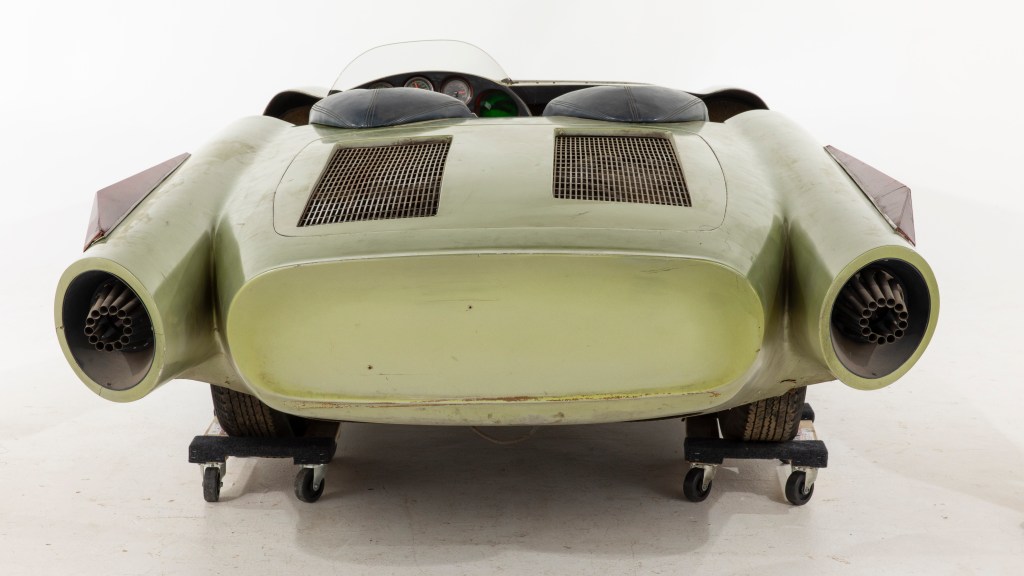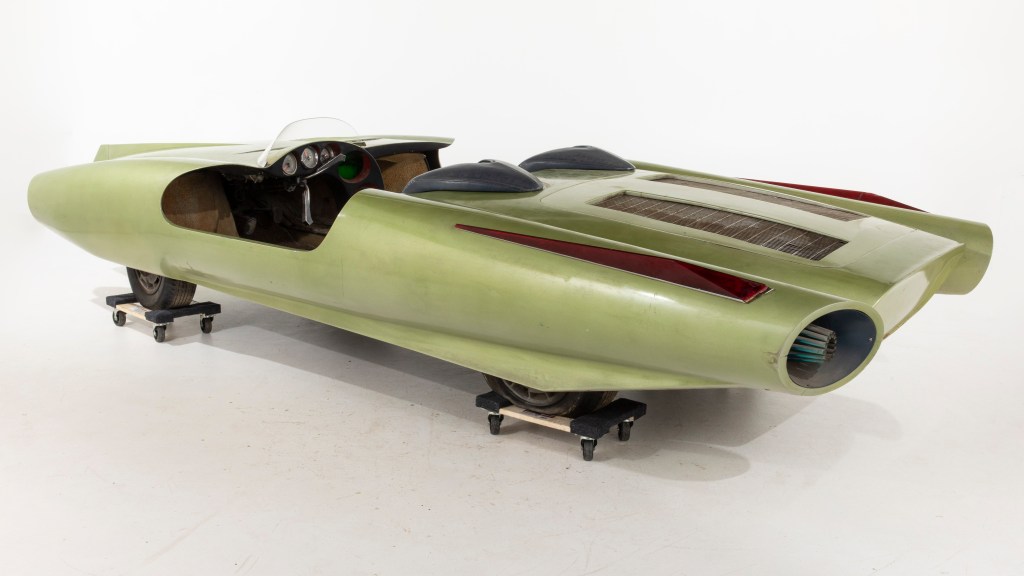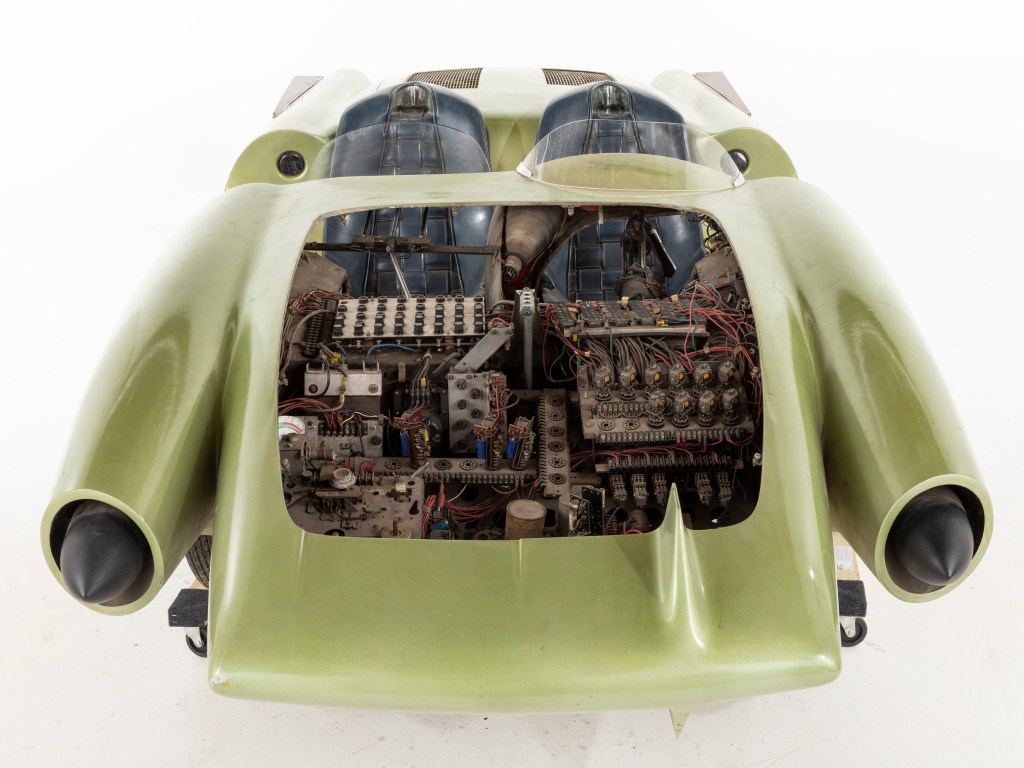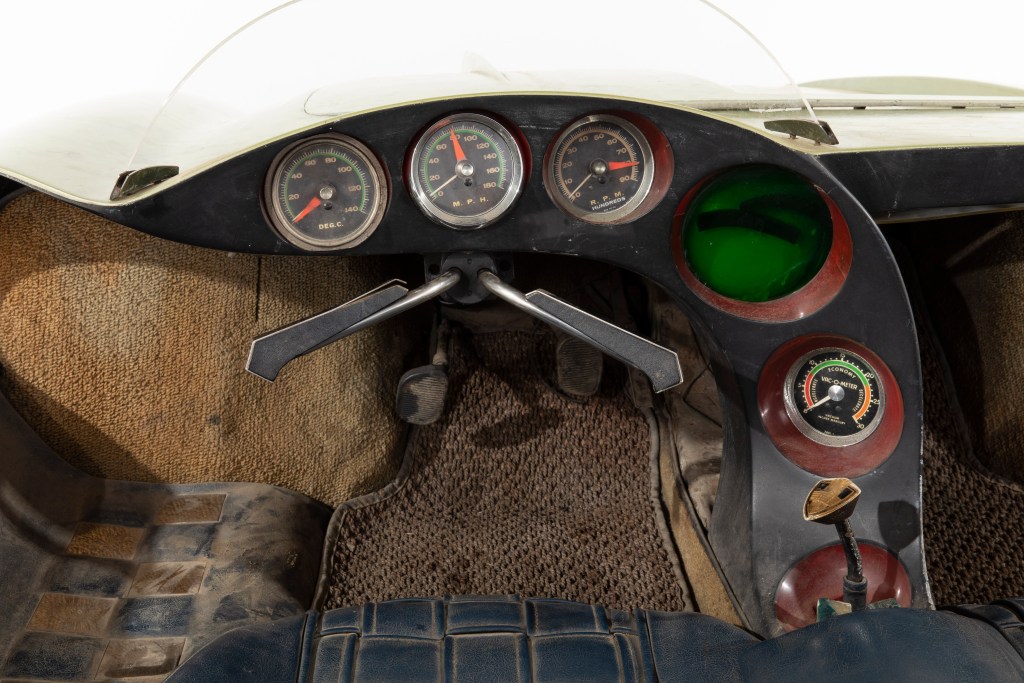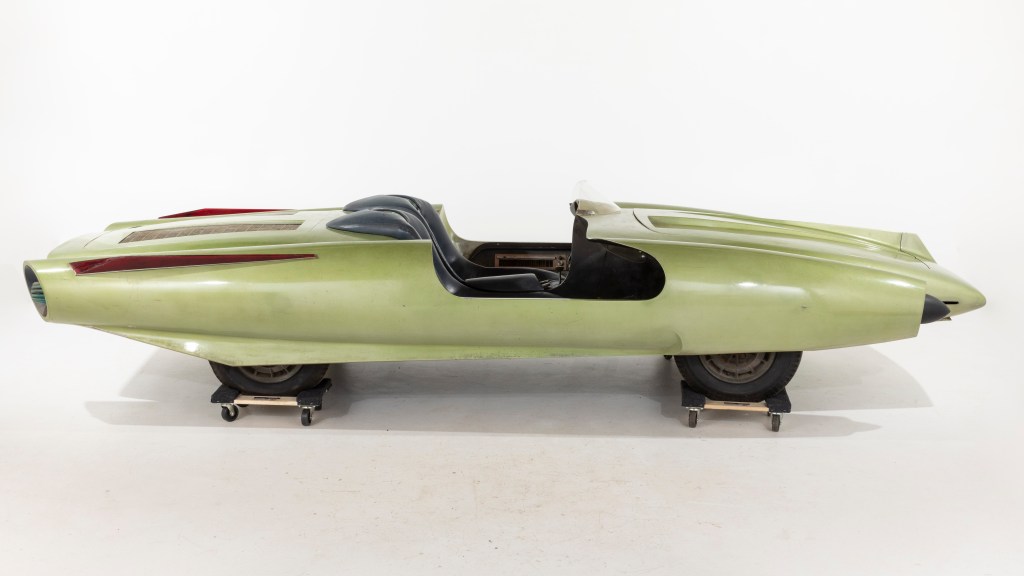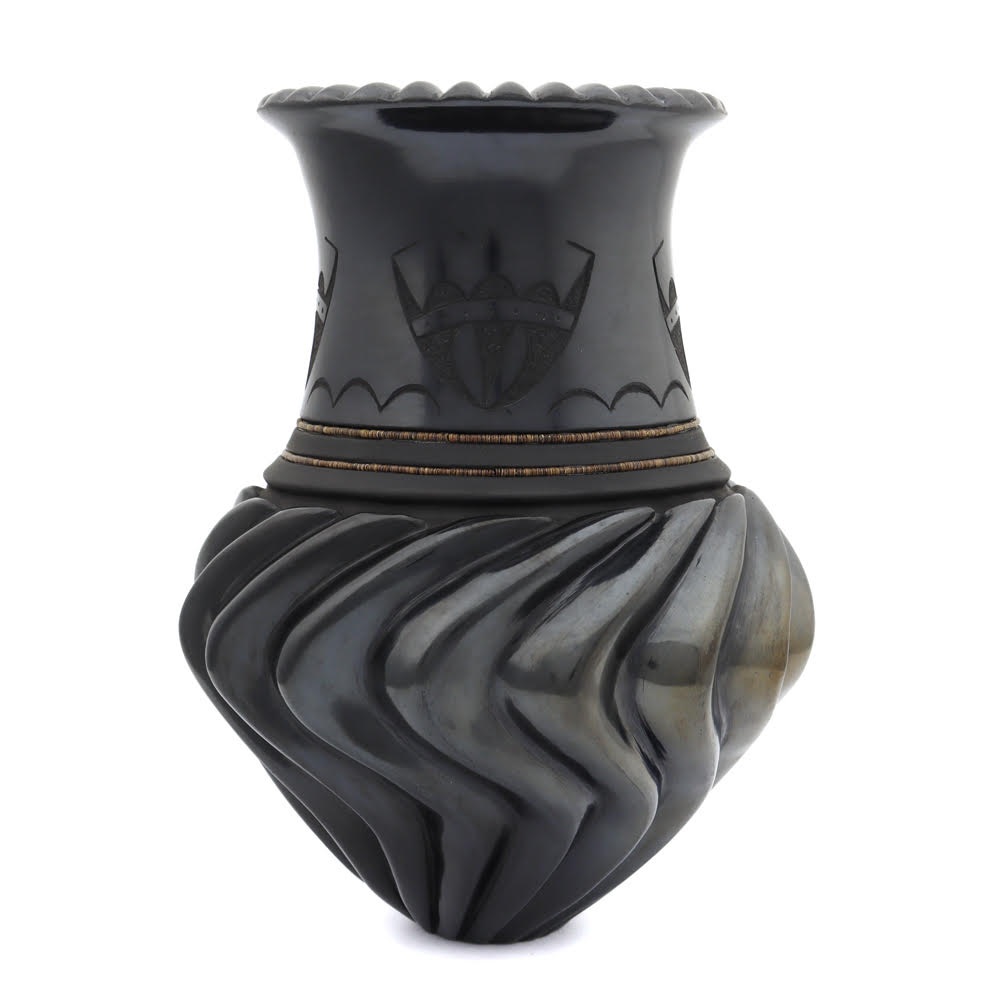A Group of Seven Tiffany Windows Could Command $250,000 (Updated November 11, 2020)

Update: The set of Tiffany windows sold for $705,000–almost twice its high estimate.
What you see: Angels Representing Seven Churches, a set of Tiffany windows created by the famed studio in 1902 for a Swedenborgian church in Ohio. Freeman’s estimates the set at $150,000 to $250,000.
The expert: Tim Andreadis, department head of 20th century design at Freeman’s.
Today, Tiffany Studios is best known for its lamps, but it also supplied custom windows for churches. Could you talk about its work in this realm? From 1870 into the early 1900, ecclesiastic work represented a substantial part of the business. Churches have a lot of money and they have wealthy patrons who are interested in supporting church projects. Tiffany Studios capitalized on that.
Who within Tiffany Studios created the religious windows? Was it the same team who created the lamps? Yes and no. Lamps and ecclesiastic commissions were separate departments in the Tiffany organization. But Clara Driscoll, who’s documented as designing lamps, did work in the area of windows. Interestingly, the process for making a Tiffany lamp and a Tiffany window are similar.
How would a Tiffany window have been made? People who were trained in the arts would create watercolor design drawings, which would be scaled up to a full size watercolor drawing and a full size drawing with outlines in black, suggesting where the leading [the metal matrix that holds the glass in place] would be. A separate group of individuals would select the glass. Tiffany Studios stocked between 200 and 300 tons of glass to pick from, in different colors and textures. They would organize the window using wax to set the pieces. Then it would be carried to a separate department, the glaziers’ department [for finishing]. If the windows were figurative, the faces, hands, and sometimes the feet of the figures were painted by trained artists. That was the only paint used. All the other effects were achieved through the glass itself or how the glass was arranged within the design.
The Tiffany Studios department that made the lamps was staffed by women. The glaziers’ department was mostly male. Was the Ecclesiastic department more mixed? I don’t know. I know a number of women in the firm selected glass that was being used, and they contributed in significant ways to the designs.
What kind of reputation did Tiffany Studios have in 1902, when they made these windows? They were certainly in full flight, to continue the angel metaphor. By 1910, thousands upon thousands of churches all over the United States, and some in Canada, had Tiffany windows.
This set of Tiffany windows has the title Angels Representing Seven Churches. Did the set always have that name, or did the name come later, after the church they were made for was demolished? Tiffany gave the name to the windows.
Is there any period documentation between Tiffany Studios and the Church of the New Jerusalem in Cincinnatti, for which the windows were made? I believe there is at least one letter between the folks at a Swedenborgian church in Ohio who commissioned the windows as a gift for the Cincinnati Swedenborgian church.

Do we know which seven churches the angels in the religious Tiffany windows represent? Each corresponds to cities that existed in Asia Minor. All are mentioned in the Bible in the Book of Revelation. Emanuel Swedenborg started the Swedenborgian religion, and it talks a lot about angels.
Where were the seven Tiffany windows placed? In the church’s nave? I think that’s correct. Behind the altar. I’m not sure how much it mattered to the congregation, but I’m sure some knew they were Tiffany windows.
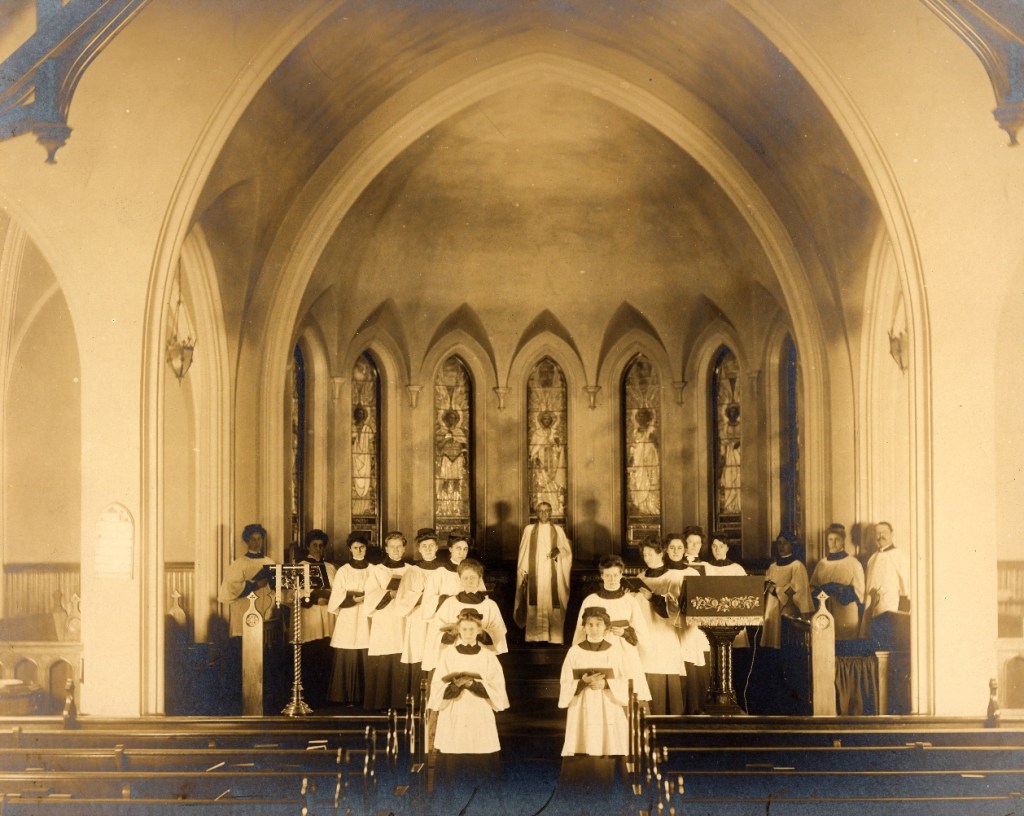
I’d like to talk through why the angels look the way they do. In the Bible, angels have no gender, but these seven–at least some of them seem to be male, and some seem to be female. In the literature I’ve read about this specific set of windows, the angels are referred to as genderless, but I find myself wanting to refer to them as males or females based on their facial features. When you look at other angels Tiffany did, they’re almost always gendered, and very often female.

But this group of angels shown on the Tiffany windows is more mixed? It’s more mixed, or there seems to be an effort to make the angels androgynous. In the Biblical references, they aren’t gendered. They represent the church, and the church is genderless. It’s a quandry, because it’s hard not to look at the figures and not see male or female features.

It seems that all seven angels on the Tiffany windows share two details in common: red-orange wings, and a blazing star above their heads. Do we know why those details are there? Do they have any theological significance beyond the obvious, or are they there just to graphically unite the group? The motifs were definitely chosen to unite them, and to show that none was more important than the others.
And the Bible verses at the feet of each angel–those are from the Book of Revelation? They are taken from the Book of Revelation. I don’t know if they are verbatim or adapted.
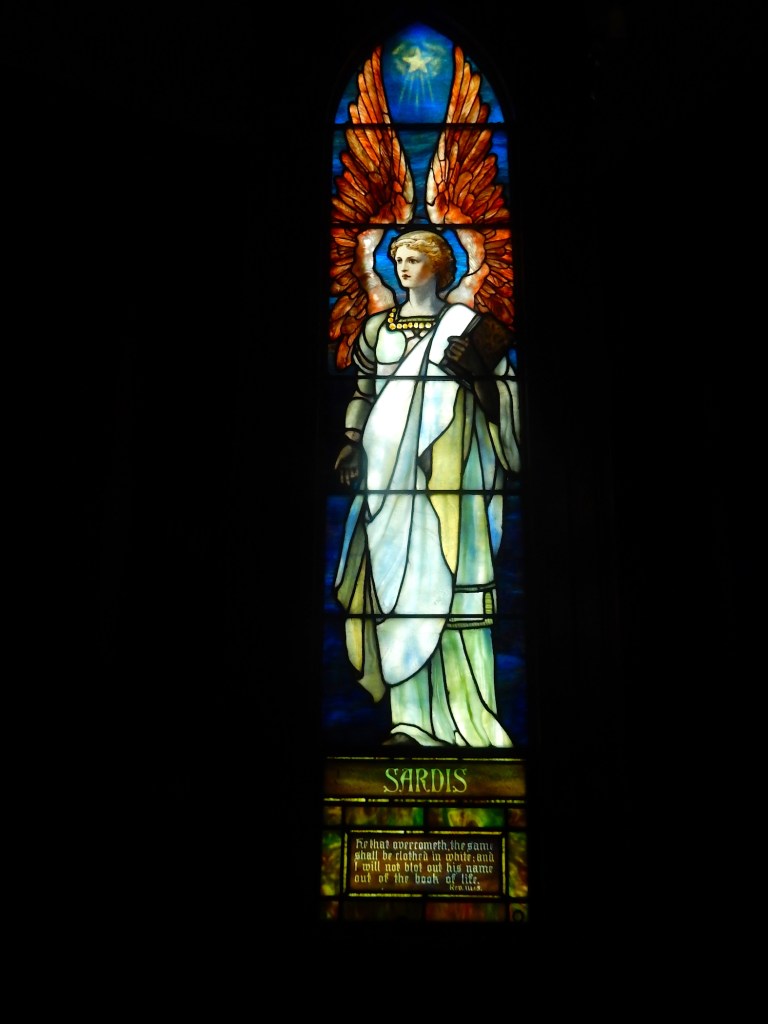
How do these religious Tiffany windows show the firm’s mastery? First, there’s the overall design. The figures are beautifully rendered in the composition, in the style of dress, and in the way that each relates to one another. All the elements incorporated in the window are carefully designed to best illustrate that particular angel. Two, the glass reflects the firm’s penchant for richly saturated hues and a color palette that was arresting to the viewer. The feather glass not only suggests the texture of the wing, but the shading along the wing in deeply saturated striated reds and vibrant golden yellows makes each feather its own special element. Tiffany was able to paint in glass–to create all that rich texture and subtlety.
It also jumps out at me, when looking at this group of Tiffany windows, that each is a singular work of art, and they work as a group equally well. Absolutely. Each angel stands on its own artistic merit. Each is as extraordinary as the next, but there’s inherent balance.
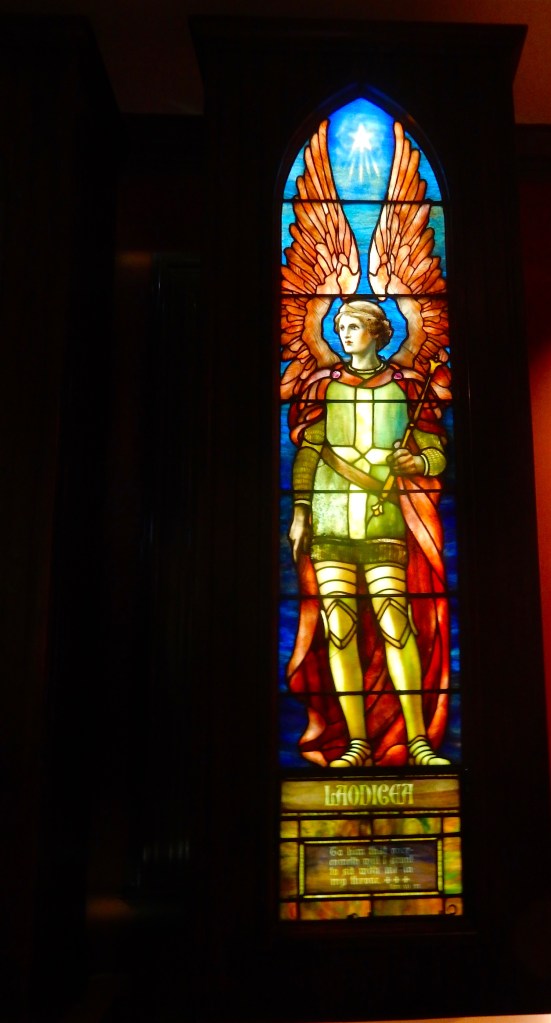
What are the dimensions of these Tiffany windows? They’re 96 1/2 inches tall and 22 inches wide.
How much does each weigh? It takes two guys to lift one. Each is probably a good 250 pounds.
How many pieces of glass are in any one window? There’s probably 500 to 1,000 pieces of glass in each window and that’s probably an underestimate. Each wing probably has 100 or so pieces in it.
How much work does each Tiffany window represent? Given all the hands involved in their creation, Tiffany needed at least two months to produce a window like this.
Why were the Tiffany windows removed from the church? My understanding is an interstate was coming through the neighborhood where the church stood. They [people involved with the church] had enough sense to want to keep the windows rather than let them be destroyed. I don’t know how the windows were taken, but they existed in crates in a number of local garages for a decade or two while they were trying to figure out what to do with them.
What happened next? The windows hung around Cincinnati until a Swedenborgian church in Pennsylvania planned to create a chapel with them in the 1970s or 1980s. I don’t know the whole story, but the chapel never came to pass. They [the leadership of the Pennsylvania church] put the windows in a barn. Around the year 2000, the retiring pastor said to the new pastor, “Oh, by the way, we’ve got these windows in the barn, you should be aware of them.” The new pastor saw that the barn needed repairs to its leaky roof. That prompted him to reach out to Tiffany scholars. It took about a year and a half to restore the windows.
So the seven Tiffany windows were stored in peoples’ garages for a decade or so? And then they were stored in a barn for about as long? It’s remarkable to think about. The windows could easily have been separated or damaged or completely disappeared. Because they just left them alone, they managed to survive.
The Tiffany windows have been restored. How original are they? Substantially original. More than 90 percent. Only a handful of panels could not be restored and were replaced. By and large, they’re preserved as they were.
What are the Tiffany windows like in person? Stunning. Extremely striking. They’re very imposing because they stand at almost life size. The glass itself is brilliant, especially in the presence of all seven when they are lit. Perhaps they took them for granted in the church, but when you view them together outside a church, their radiance and their sense of majesty is amplified.
What aspects or details of the Tiffany windows don’t quite come across in the photos? The three-dimensionality of the glass, and the accoutrements the angels have–the crowns, and the jewels on the crowns. Big chunks of glass were used to suggest rough-cut jewels.
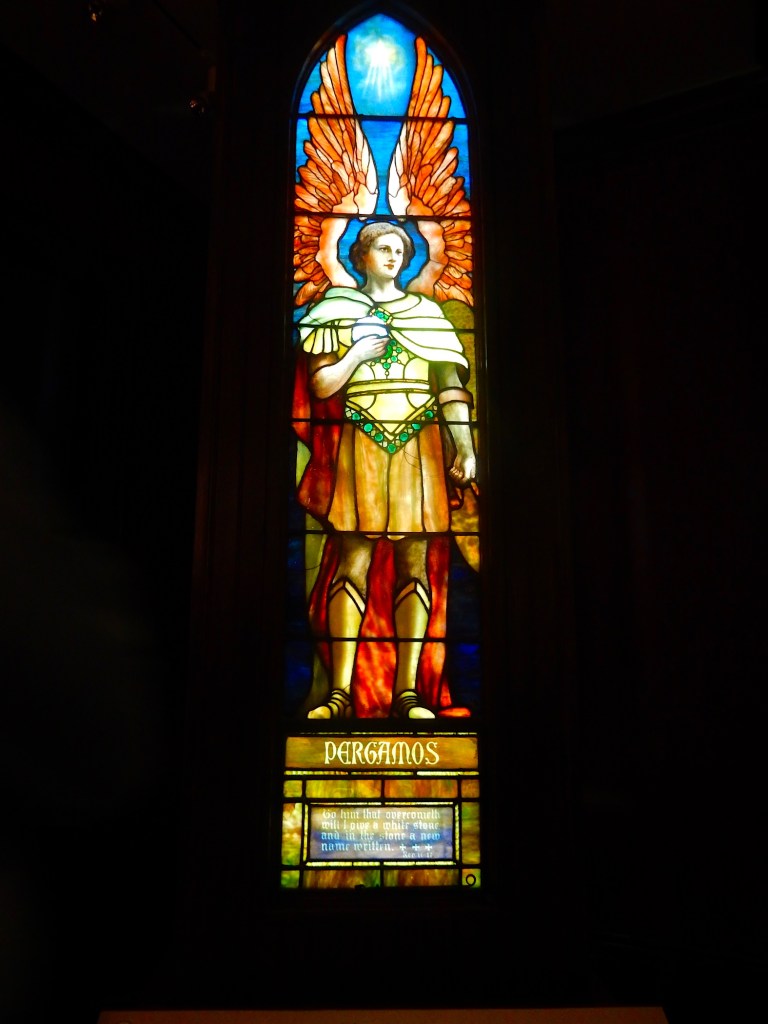
What is your favorite detail from these Tiffany windows? The Pergamos window shows the angel holding a big chunk of opalescent glass, probably eight to ten inches in the round. It’s meant to be a particular glowing white stone that’s referenced in the Book of Revelation. It’s a big, rough, faceted piece of glass. Light comes through it at different areas, magnifying that element of the window.
The Tiffany windows are, of course, made of glass. Are they fragile? Unless they sustain damage that isn’t treated, they’re very sturdy within the lead matrix. The window is not going to spontaneously fall to pieces.
How did you install the Tiffany windows for display at Freeman’s? Was that a logistical challenge? Luckily, it was very easy for us. The windows have been on tour to more than 15 museums. Prior to the tour, they had wooden, free-standing light boxes custom-built for them. The boxes can be maneuvered however you want–you can display the windows in an arch configuration, or side by side. The boxes will be made available to the winning bidder so the windows can be displayed within them.
How often do religious Tiffany windows come to auction? And how often does an intact set come up? Maybe once or twice every few years you see a window or two. They’re not on the market with any great frequency. I can’t say I’ve ever seen a set like this come up. It’s rare to have a full surviving set for any one specific commission.
Does that imply that religious Tiffany windows were retrieved and then, erm, divorced for individual sale? I do think they got split up. Churches with multiple windows saw them scattered to the winds. It’s rare to see them stay together in any great way.
Are Tiffany windows more likely to be saved from doomed churches, and more likely to survive than religious windows made by other workshops? Maybe and maybe not. I can’t say if Tiffany windows survived at a higher rate. Many of these things were removed, damaged, or lost. And a good number of churches still have their original Tiffany windows, but I don’t know the exact number.
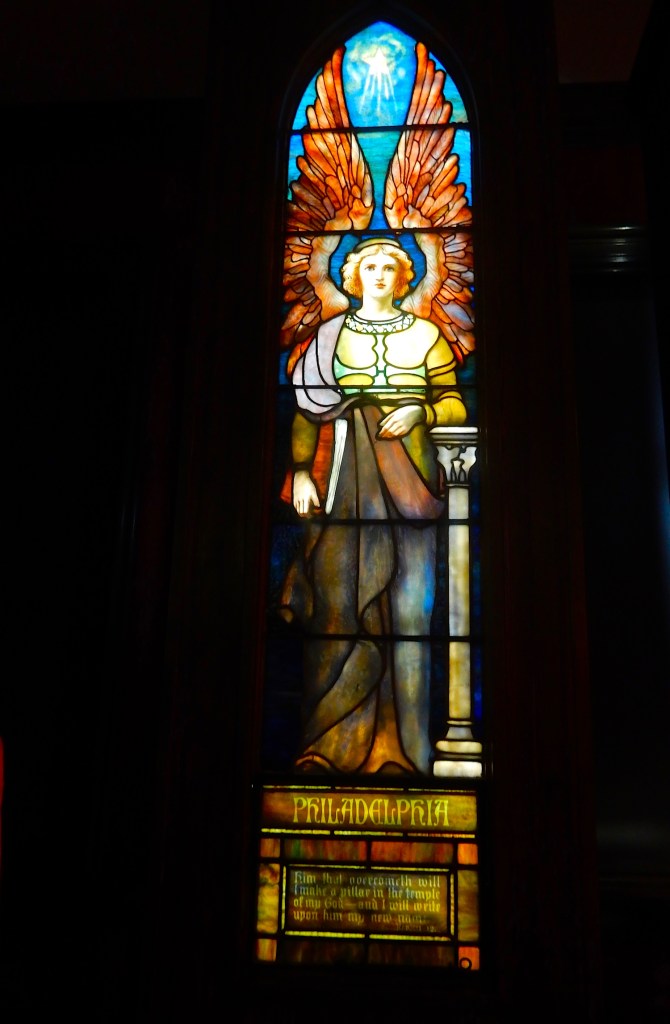
The original buyer of these Tiffany windows was a church. Who buys religious Tiffany windows now? They appeal most to private collectors who are specifically drawn to Tiffany windows. They’re a very committed and devoted group, and they’re different from collectors of Tiffany lamps. Some like scenic or floral windows, and some like figurative or angel windows. But we haven’t ruled out the possibility that an institution or a church might be interested in this group.
How did you set the $150,000 to $250,000 estimate for these Tiffany windows? What comparable items have sold at auction? Not a lot. Other figurative Tiffany windows have sold individually for $60,000, $70,000, $80,000, but we haven’t seen a set that’s remotely comparable to this.
What’s the world auction record for a religious Tiffany window? I believe it was The Stream of Life, which sold at Sotheby’s in 2016 for $2.6 million. It was three windows, but a full composition.
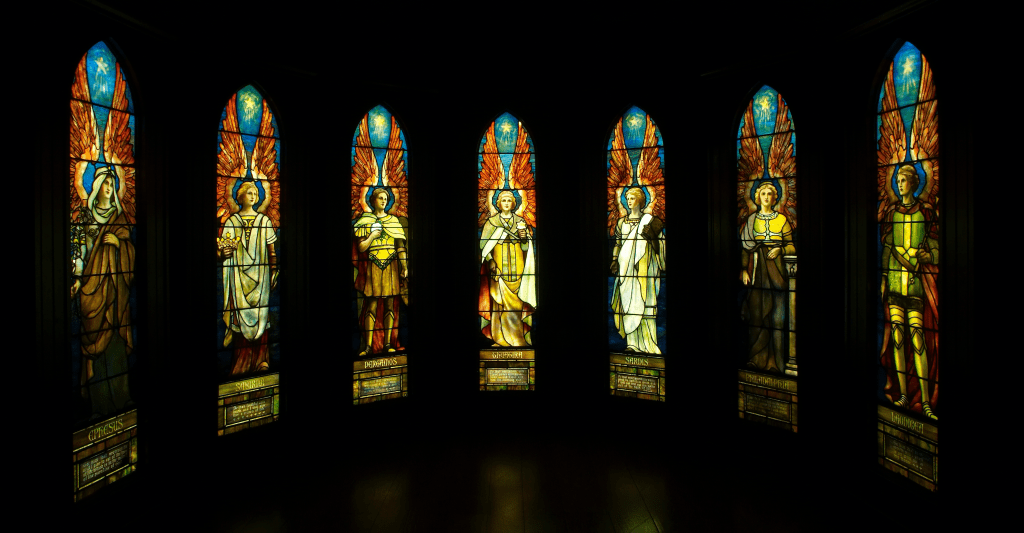
Why will this group of Tiffany windows stick in your memory? Not only because it’s Tiffany and it’s angel imagery, it’s the fact that they’ve had an amazing journey from the church to the garages to the barn, and then they went on tour. They touched so many lives in the church they were in, overseeing ceremonies. They remained hidden for decades, then they were brought into the light and shared again in a museum setting. Now they are ready to have their next life with a forever home, where they might be shared with new generations of viewers. It’s a privilege to be part of that cycle.
How to bid: Freeman’s is offering the set of Tiffany windows in a single-lot auction on November 10, 2020.
How to subscribe to The Hot Bid: Click the trio of dots at the upper right of this page. You can also follow The Hot Bid on Instagram and follow the author on Twitter.
Freeman’s is on Instagram.
Tim Andreadis previously spoke to The Hot Bid about the Thunder Table, an impressive one-off piece Wharton Esherick made for the Hedgerow Theater, a Phillip Lloyd Powell double bed, a George Nakashima Sanso table with Conoid chairs, which sold for $187,500; an Albert Paley coffee table that commanded $8,125; and a Wharton Esherick sculpture that set a world auction record for the artist.
Learn more about the set of Tiffany windows at the In Company With Angels website.
Images are courtesy of Freeman’s.
Would you like to hire Sheila Gibson Stoodley for writing or editing work? Click the word “Menu” at the upper right for contact details.


